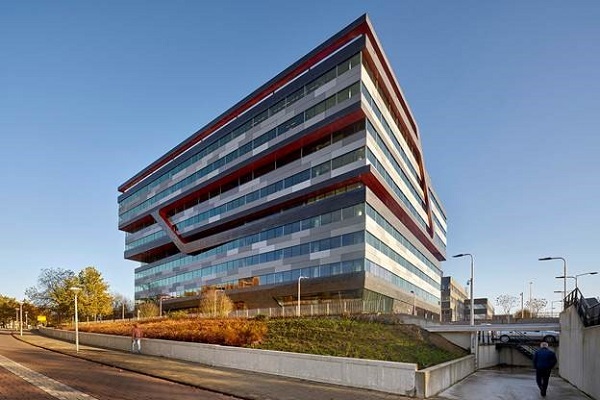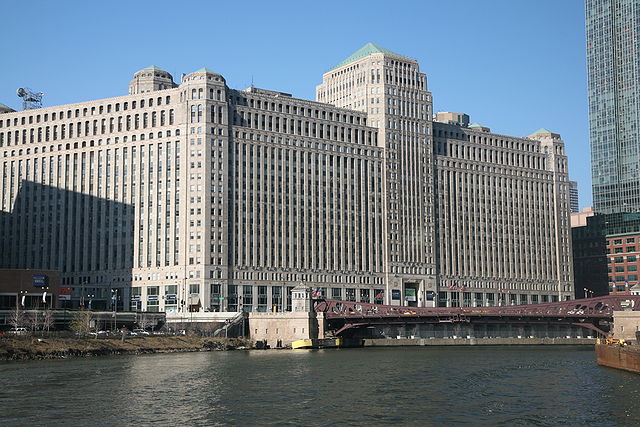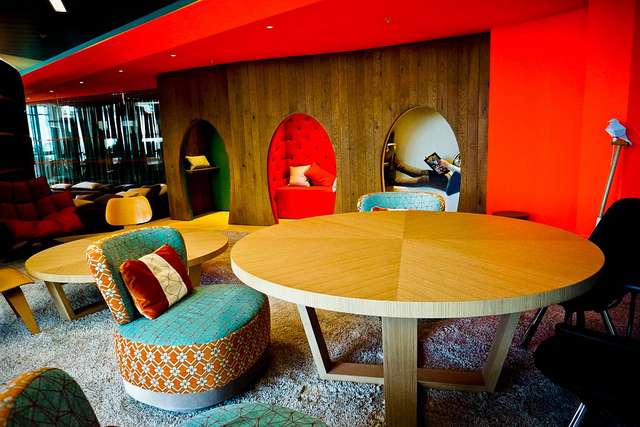We have all been witness to impactful change in the enterprise communications market. We talk about new ways to work and build technologies that aim to serve. But what about the actual physical spaces we work in? We espouse mobility and ubiquity of experience, but what about when employees actually sit in their Aeron chairs? That too is changing.
A recent survey by commercial real estate broker CBRE reports 45% of respondents “anticipate migrating to an activity-based workspace,” while 52% “anticipate implementing some level of unassigned seating.” A recent study published by the Royal Society underscores that boundaryless workspaces hinder collaboration.
Does the study reveal the emperor’s new clothes? Well, with all things, moderation is key.
Earlier this year, the Chicago Tribune published a story about how older, enormous buildings suddenly became tech company darlings -- purely for carpeted office space. Each of these relics have up to 260,000 square feet per floor. These spaces are now hot because the notion of “different floor, different planet,” as one commercial broker put it, is seeping into every boardroom. There’s a need to get out of the office and be together in today’s business.
This means collaboration. But as the Royal Society study noted, complete openness is detrimental to collaboration. Walled workspaces are still needed for solitary work, reserving collaborative spaces for when they’re needed. Organizing public collaboration spaces against a backdrop of privacy creates collaboration zones instead of a barrier-free fishbowl of desktops.
Part of the push to collaborative spaces is the urbanization of a younger workforce. In Chicago, McDonald’s abandoned its sprawling suburban campus headquarters for the city this year, and Allstate Insurance is moving 400 tech jobs downtown onto a single floor. Each believes a big driver is the availability of younger talent in urban cores. Younger talent also soaks up the type of collaboration technologies our marketplace produces.
This drive for collaborative spaces is only beginning -- like many of the technologies underpinning their enablement.
Building New Collaborative Environments
In May, I learned of a lecture by Christian Veddeler, a partner with architecture firm United Network Studio (UNStudio). One project he featured was a proposal for a European tech company’s headquarters. It vividly illustrated that workspaces are evolving along with technology.
Each office design echoed the Royal Society study by combining private working spaces with more nomadic and collaborative spaces. One project will house 4,500 tech employees in Amsterdam where work patterns were analyzed and brought to life to serve a variety of requirements. Assigned seating melted into nomad areas where usually remote workers could spend a day. Collaboration spaces, ranging from informal “huddle” areas to full-blown meeting spaces equipped with technology walls capable of snatching distant participants and documents from the cloud, connect the edges of more private working areas.
In these buildings, collaboration is a funnel from personal spots for concentration to private group spaces, each enabled by different tools. Spaces are essentially technology toolboxes driven by a personal laptop or smartphone. Collaboration technologies, meanwhile, enable uninterrupted communication flow between fixed and mobile, and the up-revving of communications from text-based to face-to-face to audio/video-enabled groups.
Another UNStudio-designed example, the multistory office for Rabobank, in Eindhoven, Netherlands, shown above, is grouped into three-floor blocks for “concentration” separated by “identity” floors. These are the collaboration floors for formal and casual meetings. The three concentration floors are laterally offset from each other, for the addition of outdoor collaborative areas.
Along with hip messages touting collaboration and productivity are real cost savings. Office layouts with “no fixed abode” seating take up less real estate and therefore cost less. Coupled with remote working, the cost of a single hot-desk workstation serves several formerly onsite workers. Many employees easily make the tradeoff from a fixed office for the added flexibility. According to the Royal Society report, the trick is to understand the interplay of privacy and collaboration, realizing not all work is a group activity.
Selling Collaboration to Architects
These examples show how organizations embrace the collaborative working concepts espoused by our industry. But they’re not creating the limitless surveillance that drags productivity from completely open-plan offices either.
Supply chains have used “just in time” principles to streamline process. Communication and collaboration need a similar approach. Architects, space planners, and social scientists offer a framework to build physically efficient and collaborative workspaces. It’s up to technology vendors to activate those spaces in a way that captures the sparks of innovation that drive business forward.
In my 25 years of IT vendor experience, I’ve found it rare to work with a client and its architect from a project’s inception. We’re usually shoehorning into a prescribed space. That’s why leading-edge communication vendors and commercial architects would better serve their clients by working together earlier in the overall design process, to deliver a better overall workspace environment for the eventual “cubicle denizens.”
We vendors do a good job filling spaces with evolving gear to serve new business needs and worker modalities. Learning and understanding from the get-go how architects structure the spaces that technology is supposed to enhance could be invaluable. We’d serve our shared customers better than an ad hoc approach of shoehorning a screen here, a phone there, while Wi-Fi-ing everything.












